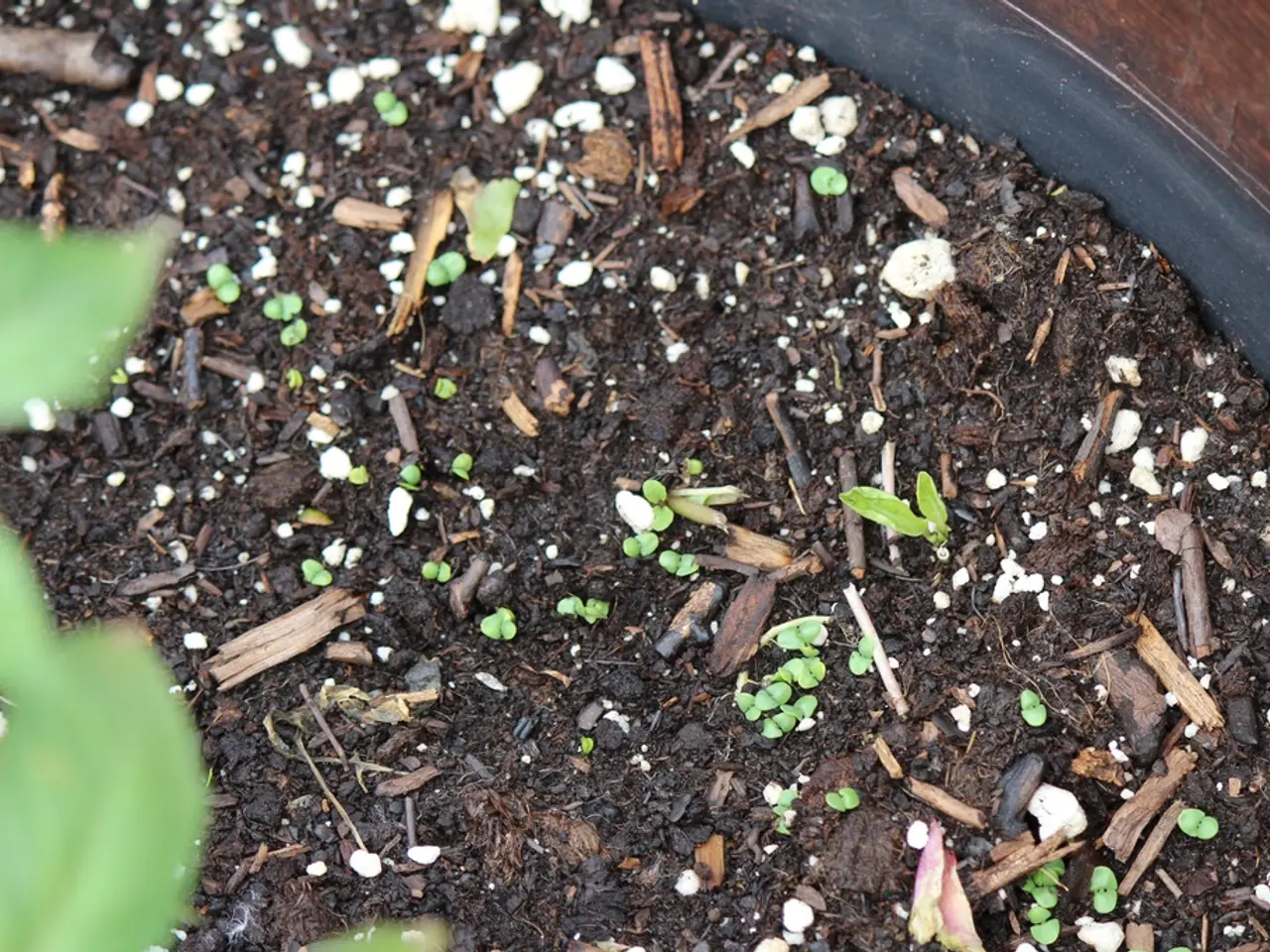Improving Soil Consistency for Healthy Plant Growth: Expert Advice on Clay Soil Cultivation
In the quest for a flourishing garden, improving clay soil structure and drainage is essential. Here's a comprehensive guide on how to transform your clay soil into a thriving environment, specifically focusing on the cultivation of Crape Myrtle.
To enhance the structure and drainage of clay soil, a combination of organic amendments, chemical stabilizers, mechanical techniques, and proper drainage management is key.
Adding organic matter such as compost, farmyard manure, leaf mold, or cover crops can lighten the soil structure, improve aeration, increase microbial activity, and enhance water retention without waterlogging. It's recommended to add a layer of 3 to 6 inches of organic matter before planting, worked down into the top 10 to 12 inches of soil, and an additional 1 to 3 inches of organic mulch added each year as a top dressing.
Soil amendments like gypsum and lime can also be beneficial. Gypsum helps break up compacted clay and improves drainage, while lime chemically alters soil texture and reduces shrink-swell behavior common in clay soils. However, it's important to note that gypsum is only effective in areas with high sodium levels in clay soils, such as arid regions or coastal areas.
Improving drainage is crucial to prevent waterlogging and promote healthy root growth. This can be achieved by raising planting beds, mixing sandy soils, and installing drainage systems like French drains or drainage pipes. Mechanical stabilization such as mixing soil layers or loosening compacted clay to improve air and water movement within the soil is also beneficial.
For heavy-duty or construction needs, chemical stabilization with lime, cement, or fly ash can bind soil particles and create stronger, more stable soil. Such methods are typically used for foundational support but can also improve drainage.
When planting Crape Myrtle in clay soil, it's important to dig a wide hole, add organic matter to the bottom, and water thoroughly. Crape Myrtle requires regular watering and fertilizing, especially during the growing season, to maintain healthy growth. It should be planted at the same depth as it was in its container and the soil around it should be firm but not compacted.
Before making any amendments to clay soil, it's recommended to test the soil to determine its makeup, organic matter content, pH, and nutrient levels. This will ensure that the correct amendments are used to create the optimal environment for Crape Myrtle growth.
Natural, traditional soil revival methods focus on promoting earthworm activity and microbial life to naturally loosen and aerate clay soil without harsh chemicals. For cover crops, they should be planted in the fall after the rains begin, allowed to grow all winter, and tilled into the soil in the spring before they seed. It may take a full year of cover crops to see significant improvement in garden soil.
In summary, the best approach to improving clay soil for Crape Myrtle cultivation combines organic matter additions, chemical amendments (like gypsum and lime), and improved drainage techniques to enhance soil structure and drainage for healthy plant growth. Mechanical and chemical soil stabilization methods support more intensive projects or areas requiring lasting soil strength.
Crape Myrtle can be planted in clay soil, but it requires proper preparation, including adding organic matter and ensuring good drainage. With the right approach, you can transform your clay soil into a thriving environment for Crape Myrtle and other plants to grow.
To effectively cultivate Crape Myrtle in clay soil, adding organic matter like compost or leaf mold to lighten soil structure, improve aeration, and enhance water retention without waterlogging is advisable. Additionally, incorporating chemical soil amendments such as gypsum or lime to break up compacted clay, improve drainage, and chemically alter soil texture can be beneficial.



